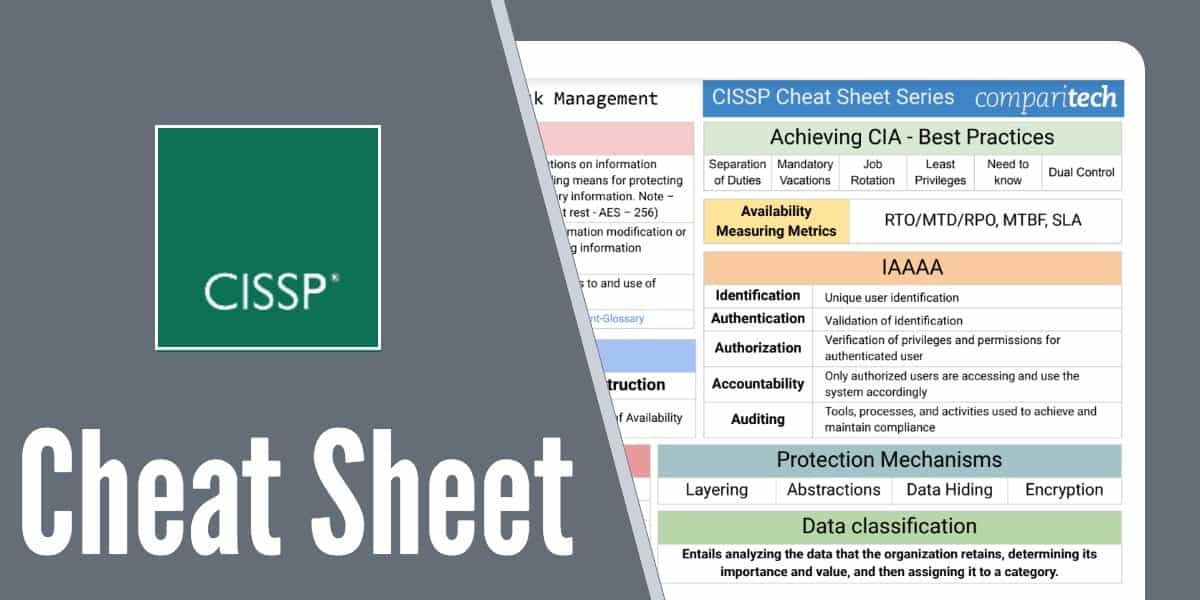
The Certified Information Systems Security Professional (CISSP) certification is highly regarded in the field of cybersecurity and is a valuable asset for professionals looking to advance their careers. However, passing the CISSP exam requires comprehensive knowledge, thorough preparation, and effective study strategies. This blog post provides valuable tips and tricks to help you navigate the CISSP certification journey successfully. By following these guidelines, you can optimize your study efforts, build confidence, and increase your chances of passing the CISSP exam.
Understand the CISSP Exam Structure and Domains:
The CISSP exam is divided into eight domains, including Security and Risk Management, Asset Security, Security Architecture and Engineering, Communication and Network Security, Identity and Access Management, Security Assessment and Testing, Security Operations, and Software Development Security. Familiarize yourself with the exam structure, weightage of each domain, and the knowledge areas covered within each domain. This understanding will help you allocate your study time effectively and focus on areas that require more attention.
Create a Study Plan and Stick to It:
Develop a structured study plan that covers all the domains, allowing sufficient time for review and practice exams. Break down the study material into manageable sections and allocate specific time slots for each domain. Be consistent and disciplined in following your study plan to ensure comprehensive coverage of the exam topics.
Utilize Official Study Guides and Resources:
Use official CISSP study guides, textbooks, and resources recommended by (ISC)², the certifying body for CISSP. These resources provide comprehensive coverage of the exam topics and are designed to align with the CISSP exam objectives. They often include practice questions, case studies, and real-world scenarios that help reinforce your understanding of the concepts.
Practice with Sample Questions and Mock Exams:
Take advantage of sample questions and mock exams to familiarize yourself with the format and style of the CISSP exam. These practice tests simulate the actual exam experience and help you assess your knowledge, identify weak areas, and improve your time management skills. Analyze your performance in the practice exams to focus on areas that need improvement.
Join Study Groups and Engage in Discussions:
Participating in study groups or online forums allows you to connect with other CISSP aspirants, share knowledge, discuss complex concepts, and gain different perspectives. Engaging in discussions can enhance your understanding of the exam topics, provide valuable insights, and foster a collaborative learning environment.
Supplement Your Study with Practical Experience:
CISSP is not solely an exam about theoretical knowledge; it also emphasizes the application of concepts in real-world scenarios. Draw upon your practical experience in the field of cybersecurity to relate the exam topics to real-life situations. This will help you grasp the concepts better and provide practical context to the theoretical knowledge.
Understand the CISSP Mindset:
The CISSP exam is designed to test not only your knowledge but also your ability to think like a security professional. Develop a security mindset that focuses on risk management, continuous learning, and the application of best practices. Approach the exam questions with a risk-based mindset, considering the impact on confidentiality, integrity, and availability of information.
Take Care of Your Physical and Mental Well-being:
Maintaining good physical and mental health is crucial during your CISSP preparation. Get enough rest, exercise regularly, and eat well-balanced meals to ensure optimal brain function. Manage stress and practice relaxation techniques to stay focused and calm during the exam.
Conclusion:
Clearing the CISSP Certification requires diligent preparation, a structured study approach, and a deep understanding of the exam domains. By following these tips and tricks, you can optimize your study efforts, build confidence, and increase your chances of success. Remember to leverage official study materials, practice exams, engage in discussions, and draw upon practical experience to enhance your understanding of the concepts. With dedication, discipline, and a well-rounded approach, you can confidently tackle the CISSP exam and achieve your certification goal.

